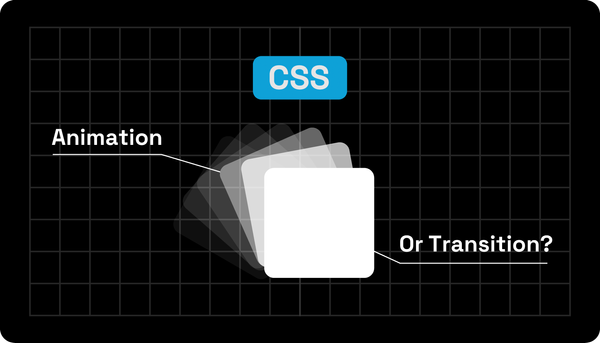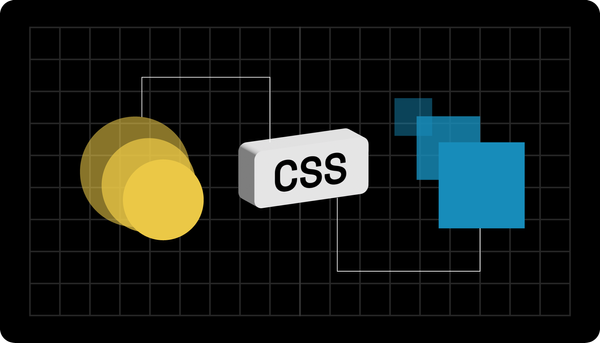The Next Decade of Microapps: Insights, Trends, and Predictions
What is the future of microapps, and how can they help you? Learn more about them here.
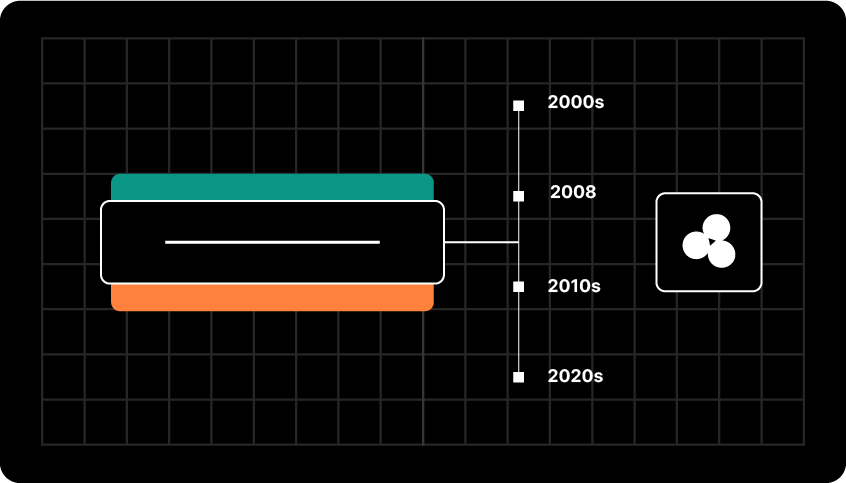
Microapp, in their essence, are akin to the streamlined tools we find on desktops, designed for precision rather than multipurpose use. Envision them as mobile applications honed to perform one task impeccably.
Rather than being overwhelmed by a multitude of features, as seen in some traditional apps, a user engages with a microapp to accomplish a specific goal swiftly. The architecture is such that the microapp operates within an application container, creating a seamless interface for users.
Diving into the realm of technology, we observe a distinct shift in user preferences and industry demands. In a world that increasingly values speed, efficiency, and simplicity, microapps have found their niche.
They cater to the contemporary user who desires quick results without navigating through complex app interfaces. In the tech industry, this translates to improved user retention, increased engagement, and potentially a higher return on investment.
Businesses, whether startups or established enterprises, have recognized this and are gradually incorporating microapp strategies into their digital landscapes.
This inclination isn't just a fleeting trend but a reflection of the evolving dynamics of app development and user interaction.
Historical Context
Evolution of mobile applications
Mobile applications have undergone a transformative journey since their inception. In the initial days of mobile technology, apps were simple, with limited functions and a basic user interface.
Remember the era of Nokia's 'Snake' game? That was just the tip of the iceberg. As smartphones like the iPhone entered the market, the app ecosystem witnessed explosive growth.
With the introduction of app stores, developers worldwide got a platform to showcase their creativity and innovation, leading to millions of apps catering to every conceivable need.
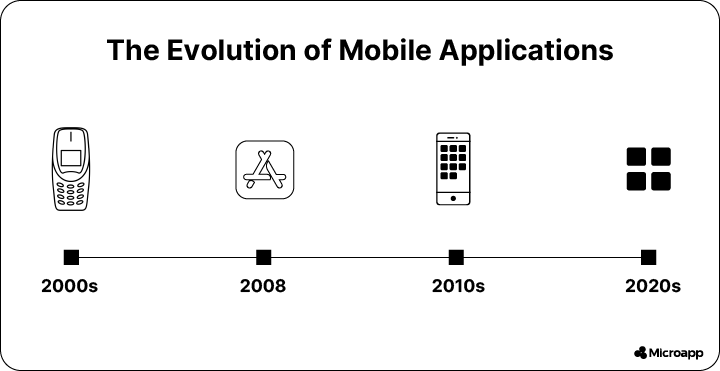
Over time, these apps began to increase in complexity, offering a plethora of features, often overwhelming users.
Emergence of microapps and their differentiation from traditional apps
In response to the burgeoning complexity of mobile apps, a new paradigm emerged: microapps. These were not just simplified versions of existing applications but a radical rethinking of the user experience.
The philosophy behind microapps is "less is more." Instead of juggling multiple functionalities, a microapp focuses on delivering a singular, streamlined task with utmost efficiency.
This approach cuts through the clutter that traditional apps sometimes bring. The differentiation is evident in their design principles. Traditional apps often aim to be comprehensive, sometimes at the risk of bloating.
On the other hand, microapps prioritize speed, simplicity, and specificity. They operate within application containers, allowing them to be embedded within larger apps or platforms, providing users with what they need exactly when they need it without the fuss.
Advantages of Microapp Architecture
Simplified user experience
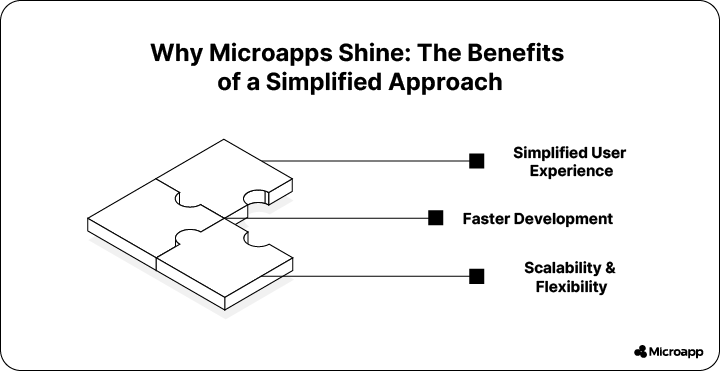
At the heart of microapp architecture lies the principle of simplicity. By narrowing down the focus to a single, specific task, microapps eliminate the clutter and cognitive load often associated with comprehensive applications.
Users are no longer required to navigate through multiple menus or sift through irrelevant features. Instead, they're presented with a clean, intuitive interface tailored to their immediate needs.
This laser-focused approach results in a more enjoyable and efficient user experience, leading to increased user satisfaction and engagement.
Faster development and deployment
Microapps have the edge when it comes to development timelines. Given their singular focus, developers can quickly design, test, and roll out these applications.
Without the need to integrate a multitude of features or ensure compatibility across multiple functionalities, the development cycle is significantly shortened. Moreover, deploying updates or patches becomes more manageable.
If a particular microapp requires tweaking, it can be done without disrupting the entire ecosystem in which it operates. This agility not only benefits developers but also businesses looking to respond rapidly to market demands or user feedback.
Scalability and flexibility of application containers
One of the standout features of microapps is their operation within application containers. These containers provide an isolated environment, ensuring that the microapp functions smoothly without interference from other apps or system processes.
This isolation offers unparalleled scalability, as new microapps can be introduced without the risk of system-wide disruptions. Additionally, the modular nature of containers allows for greater flexibility.
As businesses evolve and their needs shift, they can easily integrate new microapps or phase out outdated ones. This adaptability ensures that the digital ecosystem remains relevant and efficient in the face of changing user expectations and market dynamics.
Trends in Microapp Development
The rise of app container platforms
As microapps gain traction, so do the platforms that host them. Application container platforms, such as Docker and Kubernetes, have witnessed a surge in popularity.
These platforms provide the necessary infrastructure to seamlessly develop, deploy, and manage microapps. Their rise signifies a broader industry shift towards modular and scalable app development, catering to the evolving needs of businesses and users alike.
Integration with Internet of Things (IoT) devices
The IoT revolution has paved the way for interconnected devices, from smart thermostats to wearable health monitors. Microapps play a crucial role in this ecosystem, acting as the bridge between users and their myriad of devices.
Given their streamlined nature, microapps are ideal for IoT devices, which often require specific, targeted functionalities. For instance, a microapp might allow a user to quickly adjust the settings on their smart refrigerator or check the battery life on their fitness tracker.
As the IoT landscape expands, expect microapps to be at the forefront, enhancing device usability and interconnectivity.
Enhanced focus on user interface and experience
In the world of microapps, user experience is paramount. Given their singular focus, these apps must ensure an intuitive and delightful user journey.
This has led developers to invest heavily in innovative user interface (UI) designs and user experience (UX) strategies.
Whether it's employing the latest in haptic feedback or leveraging augmented reality for immersive experiences, the microapp industry is pushing the boundaries of what's possible in terms of user interaction.
Growth in industry-specific microapps (e.g., finance, healthcare)
Every industry has unique needs, and microapps are stepping in to address them. In the finance sector, we're seeing microapps designed for rapid stock checks or instant payment transfers.
In healthcare, microapps might assist with medication reminders or provide instant access to patient records. These industry-tailored solutions exemplify the adaptability of microapps.
As more sectors recognize their potential, we can anticipate a proliferation of specialized microapps catering to diverse fields, streamlining processes, and enhancing user engagement.
Predictions for the Next Decade
Increased prevalence in enterprise solutions
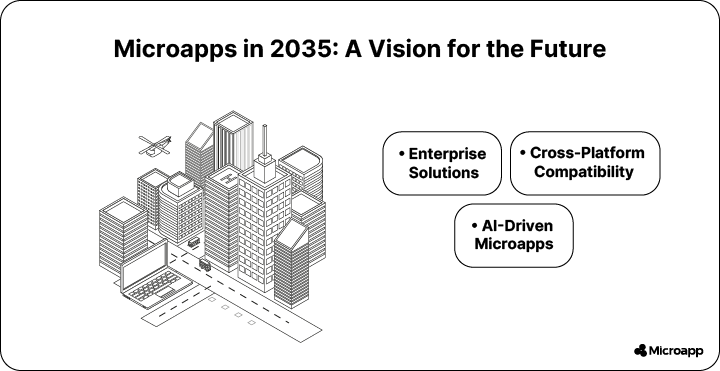
Enterprises, with their vast and often intricate operational needs, stand to benefit immensely from the microapp revolution.
In the coming decade, we can anticipate businesses adopting microapps for a range of functions, from streamlined HR processes to efficient inventory management.
Given their modular nature, microapps can be easily integrated into existing enterprise systems, allowing businesses to rapidly adapt to changing market conditions and internal demands.
This agility, coupled with the efficiency gains from using task-specific apps, will likely propel microapps to become a staple in the corporate tech toolkit.
Cross-platform compatibility and interoperability
As users continue to diversify their device usage—switching between mobiles, tablets, desktops, and wearables—the demand for cross-platform applications will soar.
Microapps are poised to meet this challenge head-on. Their lightweight nature and containerized architecture make them ideal candidates for cross-platform deployment.
In the next decade, we might witness microapps that function seamlessly across ecosystems, providing users with a consistent experience irrespective of their device choice.
This interoperability will not only enhance user convenience but also broaden the reach and impact of microapps.
Advancements in AI-driven microapps
Artificial intelligence (AI) continues to reshape the tech landscape, and microapps will be no exception.
We can envisage a future where AI-powered microapps provide hyper-personalized user experiences, learning from individual behaviors and preferences to offer tailor-made solutions.
Imagine a fitness microapp that adjusts workout recommendations based on a user's past performance and current health metrics or a finance microapp that offers real-time investment advice based on market trends.
The convergence of AI and microapps promises a smarter, more responsive digital environment.
Potential challenges
While the horizon looks promising for microapps, it's not without its clouds. Security will be a paramount concern.
As businesses increasingly rely on microapps for critical operations, ensuring that these apps are impervious to breaches becomes essential.
Additionally, as the line between traditional apps and microapps blurs, there might be heightened competition.
Developers will need to continually innovate to differentiate their offerings and prove the value of a microapp-centric approach.
Real-world Examples of Microapp Successes
Case study 1: QuickHR - Streamlining Employee Onboarding
Background: QuickHR is a microapp designed specifically for HR departments to expedite the onboarding process for new hires.
Instead of navigating through complex HR software, managers and new employees use QuickHR to complete essential onboarding tasks in minutes.
Implementation: Many businesses, especially startups with rapid hiring needs, found traditional HR platforms cumbersome. QuickHR was embedded into their existing HR systems, offering a simplified interface focused solely on onboarding.
Success Metrics:
- Reduced onboarding time by 60% on average.
- Increased satisfaction scores among new hires, indicating a smoother introduction to the company.
- Decreased errors in onboarding paperwork, leading to fewer compliance issues.
Feedback: Businesses appreciated how QuickHR integrated seamlessly with their existing platforms, providing a dedicated space for onboarding without the distractions of other HR functionalities.
Case study 2: HealthCheck - Instant Symptom Analysis
Background: HealthCheck is a microapp developed for healthcare providers and patients, offering immediate symptom analysis and potential diagnoses.
Users input their symptoms, and the app provides a list of potential ailments, advice, and if necessary, a recommendation to see a healthcare professional.
Implementation: Several telehealth platforms integrated HealthCheck to provide an initial touchpoint for patients before scheduling a virtual consultation.
The app helped streamline patient queries, directing serious cases to professionals while offering advice for milder symptoms.
Success Metrics:
- A 45% decrease in unnecessary telehealth consultations, saving both patients and providers time.
- 90% accuracy rate in symptom analysis, leading to increased trust in the platform.
- Enhanced patient engagement, with users frequently checking symptoms and acting upon the app's recommendations.
Feedback: Healthcare providers noted that HealthCheck acted as an efficient filter, ensuring that only necessary consultations were booked. Patients appreciated the immediate feedback, providing peace of mind and guidance on next steps.
Conclusion
Microapps are undeniably reshaping the landscape of app development and user interaction.
Their emergence is a testament to the evolving demands of users and businesses alike, who prioritize simplicity, efficiency, and targeted functionality.
As we look ahead, the potential of microapps seems vast, from revolutionizing industries to enhancing day-to-day user experiences.
But, as with any technological evolution, challenges will emerge, necessitating continued innovation and adaptability.
One thing, however, is clear: microapps are here to stay, and their influence on the digital world will only grow in the years to come.


